|
|
| |
UNITED KINGDOM
CAMBRIDGE
Cambridge is located about 60 miles (100 Km) from London. Its university was founded in the twelfth century by disaffected academics from Oxford University. The best time to visit Cambridge as a tourist is in the first half of June, particularly the week known as May-week. All exams are over by then and the students want to relax with parties, open-air drama, rowing races on the river, all-night balls in the Colleges and general mayhem. Most of the events are open to the public and ticket prices are usually low, the exceptions being the College balls (May balls) where prices are high and tickets are usually sold-out in April. A visit to the bumping races on the river is well worth while during May-week but means an excursion outside Cambridge to the north east. Its possible to walk or take a bicycle - a car is probably inadvisable unless you are familiar with the area. Cambridge is crowded with tourists between April and September. Most arrive and depart by coach in the same day and don't get much past Silver Street Bridge (to look at the Mathematical Bridge in Queens' College) and King's Parade (to see King's College Chapel). Many of the colleges now charge tourists for admission and restrict the times of access for visitors.
Travelling into Cambridge city centre by car is not recommended and a number of alternatives are available. Many people now travel into the city on the Park and Ride bus service. This operates frequent buses from five car park locations on the city outskirts into the city centre. There is an excellent City bus network around the city, including a night bus on Friday and Saturday nights. There are also good services into the city from the main local towns. The City Circle is a free bus service that operates Monday to Saturday every 15 minutes. It does a circular route and serves the Grafton Centre, Jesus Lane, Trinity Street, Market Square, Corpus Christi and Downing Street. If you have a mobility disability, Cambridge and Cambridgeshire Passenger Transport has useful information such as which services have low-floor buses. Contact them by telephone on 01223 717 740.
The rail station is just south of the city centre. There are regular buses and taxis available from the station, and journey time to the city centre is usually five to ten minutes. The National Rail website provides information on routes and fares, and lets you check train schedules and buy tickets.
 View over Trinity College, Gonville and Caius and Clare College
Theatre
Cambridge's main traditional theatre is the Arts Theatre, a venue with 666 seats in the town centre. The theatre often has touring shows, as well as those by local companies. The largest venue in the city to regular hold theatrical performances is the Cambridge Corn Exchange – capacity 1800 standing or 1200 seated. Housed within the city's 19th century former corn exchange building the venue was used for a variety of additional functions throughout the 20th century including tea parties, motor shows, sports matches and a music venue with temporary stage. The newest theatre venue in Cambridge is the J2 also known as The Shed. The venue was opened in 2004 and hosts live music, comedy and night clubs as well as traditional and contemporary theatre and dance. The ADC Theatre is managed by the University of Cambridge, and typically has 3 shows a week during term time.
 The main entrance to the Fitzwilliam Museum in Cambridge
Photograph © Andrew Dunn
The Fitzwilliam Museum is the art and antiquities museum of the University of Cambridge, located on Trumpington Street opposite Fitzwilliam Street in central Cambridge. The museum has five departments: Antiquities; Applied Arts; Coins and Medals; Manuscripts and Printed Books; and Paintings, Drawings and Prints. Together these cover antiquities from Ancient Egypt, Sudan, Greece and Rome, Roman and Romano-Egyptian Art, Western Asiatic displays and a new gallery of Cypriot Art; applied arts, including English and European pottery and glass, furniture, clocks, fans, armour, Chinese, Japanese and Korean art, rugs and samplers; coins and medals; illuminated, literary and music manuscripts and rare printed books; paintings. Admission is free.
Cambridge University Botanic Garden
The Cambridge University Botanic Garden holds a plant collection of over 8000 plant species from all over the world to facilitate teaching and research. The Garden provides resources including plant material, horticultural expertise and facilities to research workers and lecturers. Since its foundation, however, the Botanic Garden has also provided a beautiful place for everybody to enjoy and benefit from - a series of wonderful landscapes through which to discover the drama of plant diversity.

Cambridge botanic garden showing the lake and glasshouses
Photograph © NHSavage
Cambridge Shakespeare Festival is an eight-week season of open-air performances of the works of William Shakespeare, held in the gardens of the Colleges of The University of Cambridge. It is one of finest events of its kind in the UK. It usually runs between mid-July to end of August. The Festival has become a significant cultural event in the region and can expect to attract upwards of 25,000 visitors for the productions which run during the eight weeks of the Festival. Also, because the city attracts so many tourists at this time of year, the Festival has acquired a national and international dimension, with many visitors returning to Cambridge again and again. The productions themselves are vivid and spectacular, and are performed in full period costume with live Elizabethan music. Imperceptibly the evening passes from a glorious summer evening to dusk and then to night. The moon rises to provide additional lighting in a way that no theatre could match. Following the performance the audiences from each venue return to the heart of Cambridge and its many bars and restaurants to end a perfect evening.

Mathematical Bridge from Silver Street
Photograph © M. Tawsif SalamFestivals and events
Several fairs and festivals take place in Cambridge, mostly during the British summer. Midsummer Fair dates back to 1211, when it was granted a charter by King John. Today it exists primarily as an annual funfair with the vestige of a market attached and is held over several days around or close to midsummers day. On the first Saturday in June Midsummer Common is also the site for Strawberry Fair, a free music and children's fair, with a series of market stalls. Cambridge Folk Festival, one of the largest festivals of folk music in the UK, is held annually in the grounds of Cherry Hinton Hall on the outskirts of the city. The Cambridge Summer Music Festival is an annual festival of classical music, held in the University's colleges and chapels. Started in 1977, the Cambridge Film Festival was held annually in July, but moved to September in 2008 to avoid a clash with the rescheduled Edinburgh Film Festival.
 King's College Chapel
Photograph © King's College, CambridgeKing's College Chapel
King's College Chapel is one of the most iconic buildings in the world, and is a splendid example of late Gothic (Perpendicular) architecture. It was started in 1446 by Henry VI (1421-71) and took over a century to build. It has the largest fan vault ceiling in the world and some of the finest medieval stained glass. The Chapel is also the venue for the Christmas Eve service, A Festival of Nine Lessons, which is broadcast to millions around the world. The Chapel plays a central role in College life. It was originally built as a place of daily worship for the College scholars, and today the choir still sing evensong during term time.
Duxford Imperial War Museum
IWM Duxford is set within the spacious grounds of the famous former First and Second World War airfield. Lose yourself for a whole day wandering under and around some of the most iconic aircraft in the world and get hands-on with our award-winning interactive exhibitions. IWM Duxford is home to an impressive collection of over two hundred aircraft as well as tanks, military vehicles and boats. The site also provides storage space for the museum's other collections of material such as film, photographs, documents, books and artefacts. The site accommodates a number of British Army regimental museums, including those of the Parachute Regiment and the Royal Anglian Regiment. Based on the historic Duxford Aerodrome, the site was originally operated by the Royal Air Force (RAF) during the First World War. . During the Second World War Duxford played a prominent role during the Battle of Britain and was later used by United States Army Air Forces fighter units in support of the daylight bombing of Germany.
 View of the AirSpace exhibition hall at Imperial War Museum Duxford
Photograph © IxK85Milton Country Park
Milton Country Park is built on the site of a former gravel pits. For many years it was a haven for wildlife but was formally designated as a country park in 1993. Two flooded pits called Todd's Pit and Dickerson's Pit now form freshwater lakes, both being available for fishing, the former for carp, the latter for general silver fish and pike. A smaller pool named Hall's Pool between the pits has a dipping platform, while Deep Pool, the deepest pit in the park lies to the north of Dickerson's Pit. The Park itself is open to the public 24 hours a day, 365 days a year. However the car park, the Visitor Centre, and toilet block are open from 9am each day, every day of the year except Christmas Day. Rangers are on duty in the park at these times. Closing times vary according to the season. Currently the Cafe closes at 4:30pm weekdays, 4:30pm weekends and the car park at 4:30pm.
Ely Cathedral
Ely Cathedral is the principal church of the Diocese of Ely, in Cambridgeshire. It is known locally as "the ship of the Fens", because of its prominent shape that towers above the surrounding flat and watery landscape. The cathedral is built from stone quarried from Barnack in Northamptonshire with decorative elements carved from Purbeck Marble and local clunch.
 Ely Cathedral, The West Tower
The college contains a large attractive courtyard and library designed by Sir Christopher Wren. The interior of the Wren Library is particularly beautiful and features medieval bibles, items from the possession of Isaac Newton, original manuscripts by Wittgenstein, a Winnie-the-Pooh manuscript by A.A. Milne, and notes by Bertrand Russell, among other things. Even when the college is closed to visitors, the library may still be accessible from Queens Road on the other side of the River Cam.
American Military Cemetery, Madingley
The World War II Cambridge American Cemetery and Memorial is located three miles west of Cambridge on the A1303 and sixty miles north of London. The Cambridge American Cemetery and Memorial is a cemetery and chapel dedicated to American servicemen opened in 1956, on the southern edge of the village beside the road from Cambridge to St Neots. The 30½ acres were donated by the University of Cambridge. 3812 American military dead are buried in the cemetery. In addition, the names of 5127 are inscribed on the Wall of the Missing, Americans who lost their lives but whose remains were never recovered or identified. Most of these died in the Battle of the Atlantic (1939-1945) or in the strategic air bombardment of Northwest Europe during World War II.
|
|
|
Events
Bonfire Night
5 November
On 5th November 1605, soldiers discovered a man called Guy Fawkes in a cellar under the Houses of Parliament. With him were at least twenty barrels of gunpowder. Guy Fawkes was arrested and tortured. At last he gave way and told his torturers about a plot to blow up Parliament together with the king, James I, his ministers and Members of Parliament.
In 1606 Parliament agreed to make 5th November a day of public thanksgiving and ever since then the day has been celebrated with fireworks and bonfires.
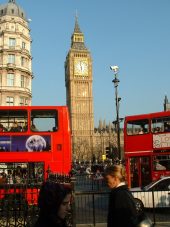
The Clock Tower
Photo: PKG
Chelsea Flower Show
May
Chelsea Flower Show is the world's most popular and renowned flower show. The best in gardening and horticulture is brought together in one place for one week in May.
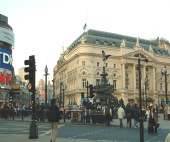 Piccadilly Circus
Photo: PKG
Edinburgh International Festival
August
Each year the Edinburgh International Festival stages one of the greatest celebrations of the arts, attracting audiences from around the world to the city's thrilling atmosphere. The festivities offer a unique opportunity to experience the excitement of live performance by internationally renowned artists as well as the joy of discovering new and unfamiliar works.
 St. James Park
Photo: PKG
Henley Royal Regatta
June
Henley Regatta was first held in 1839. Originally staged by the Mayor and people of Henley as a public attraction with a fair and other amusements, the emphasis rapidly changed so that competitive amateur rowing became its main purpose.
 Horse Guards Parade
Photo: PKG
London Film Festival
November
With a host of gala screenings, special events, The Guardian Interviews, and UK, European and World Premieres, the British Film Institute's London Film Festival is the leading non-competitive event in the international cinema calendar.
 Kenwood House
Photo: PKG
London International Boat Show
January
The London Boat Show is a glittering affair, with all the best in boating on display. London's Earls Court houses the international boat show with all the latest in boats, equipment, watersports and holidays.
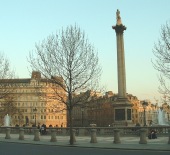 Trafalgar Square
Photo: PKG
London Marathon
April
Aside from being a natural arena for competitiveness and human achievement, the London Marathon is a huge asset to thousands of charities who enter athletes in the hope of raising money, usually on a sponsorship basis.
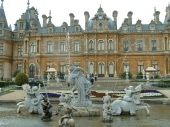 Waddesdon Manor
Photo: PKG
Notting Hill Carnival
August
Every August Bank Holiday the Notting Hill Carnival brings London alive. The festival began as West Indian immigrants moved into the area during the fifties and is now one of the best carnivals in the UK attracting over a million people each year. The first carnival was in 1964, and grew up from the struggle between the black West Indian community and the police. Today the carnival celebrates the diverse cultures which make up Britain's identity.
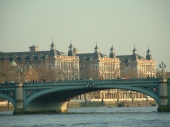 Westminster Bridge
Photo: PKG
Royal Welsh Show
July
This is the flagship show for WCC members. Held in the South Glamorgan Hall, which is situated close to some of the main entrances to the showground, it is also near to the livestock and show rings which attract many thousands of visitors.
 London
Photo: PKG
Southampton International Boat Show
September
The biggest and best of the season's boats is on display, as well as the latest in sailing wear, equipment and great holiday offers.
 Green Park
Photo: PKG
State Opening of Parliament
November
The Queen formally opens the new session of Parliament each year. Accompanied by the Duke of Edinburgh she travels in the State Coach to the Palace of Westminster. Before the royal procession sets out, a detachment of the Yeomen of the Guard (dating from 1485, they are the oldest of the royal bodyguards) search the cellars of the Houses of Parliament. This tradition dates back to the Gunpowder Plot of 1605, when Guy Fawkes was arrested whilst preparing to blow up Parliament. Today the Yeomen are reinforced by police in their search.
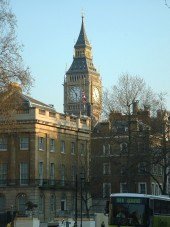 The Clock Tower
Photo: PKG
|

